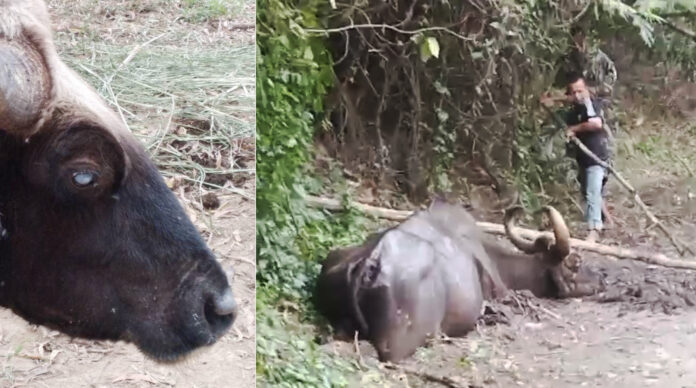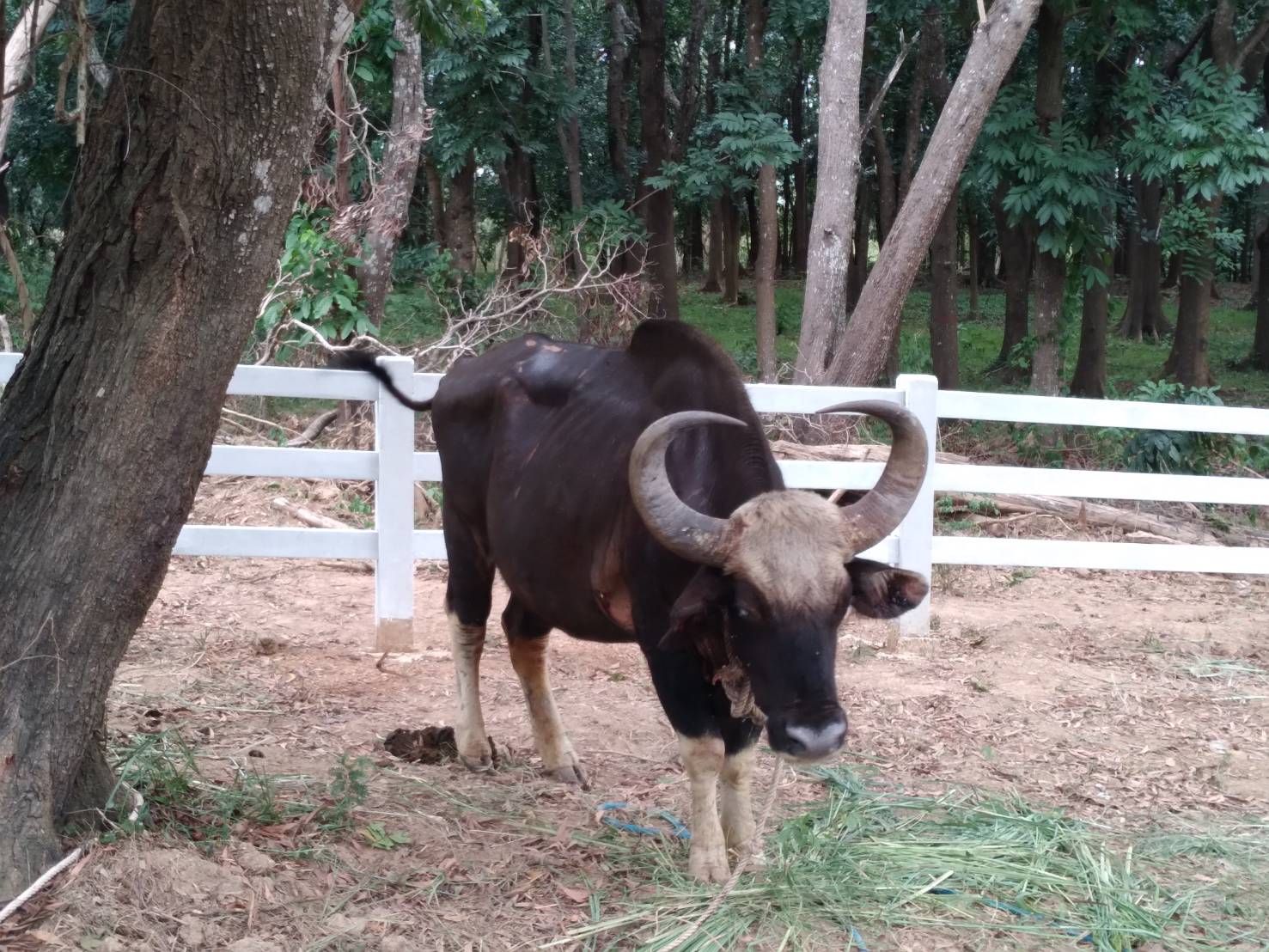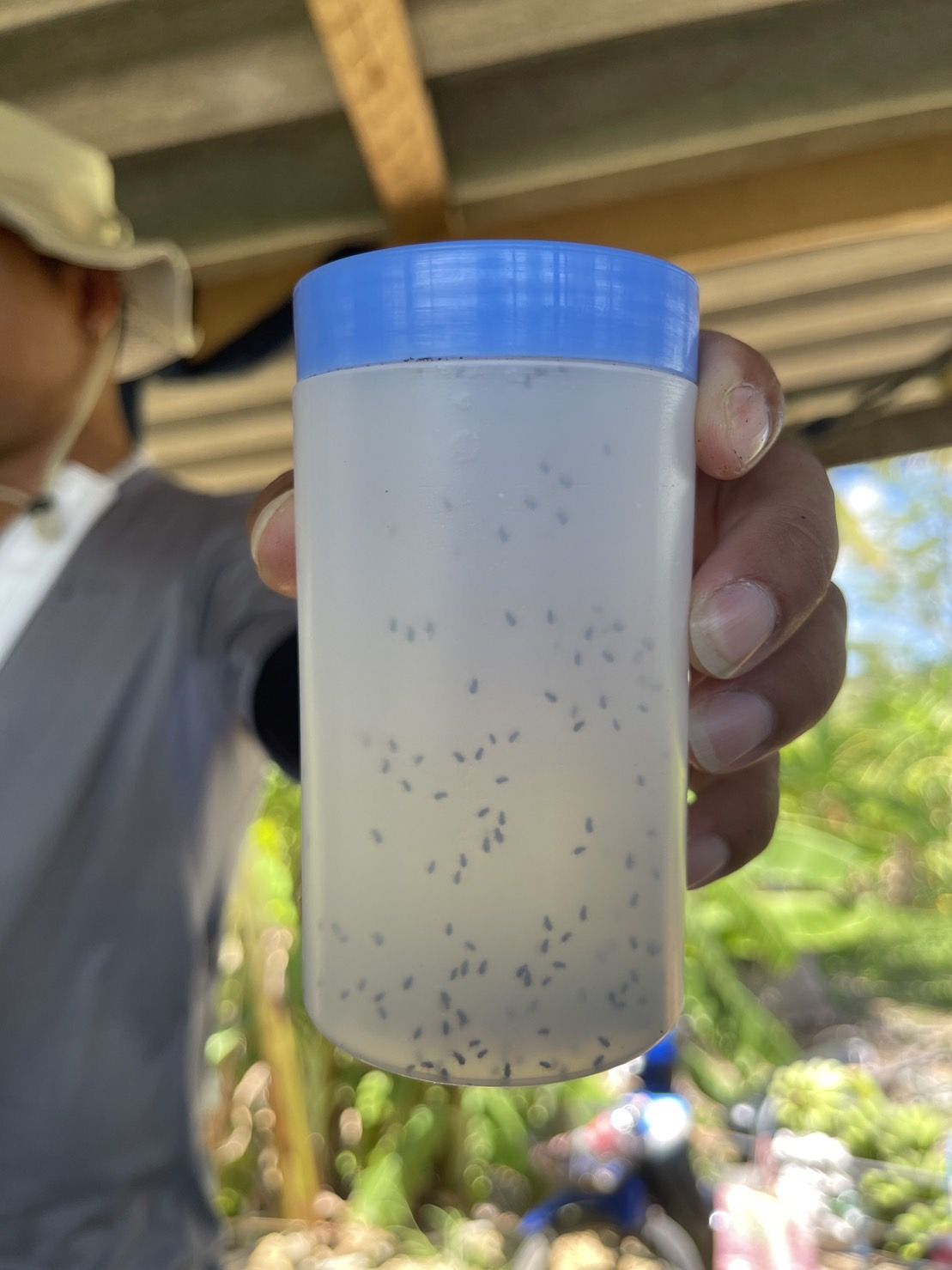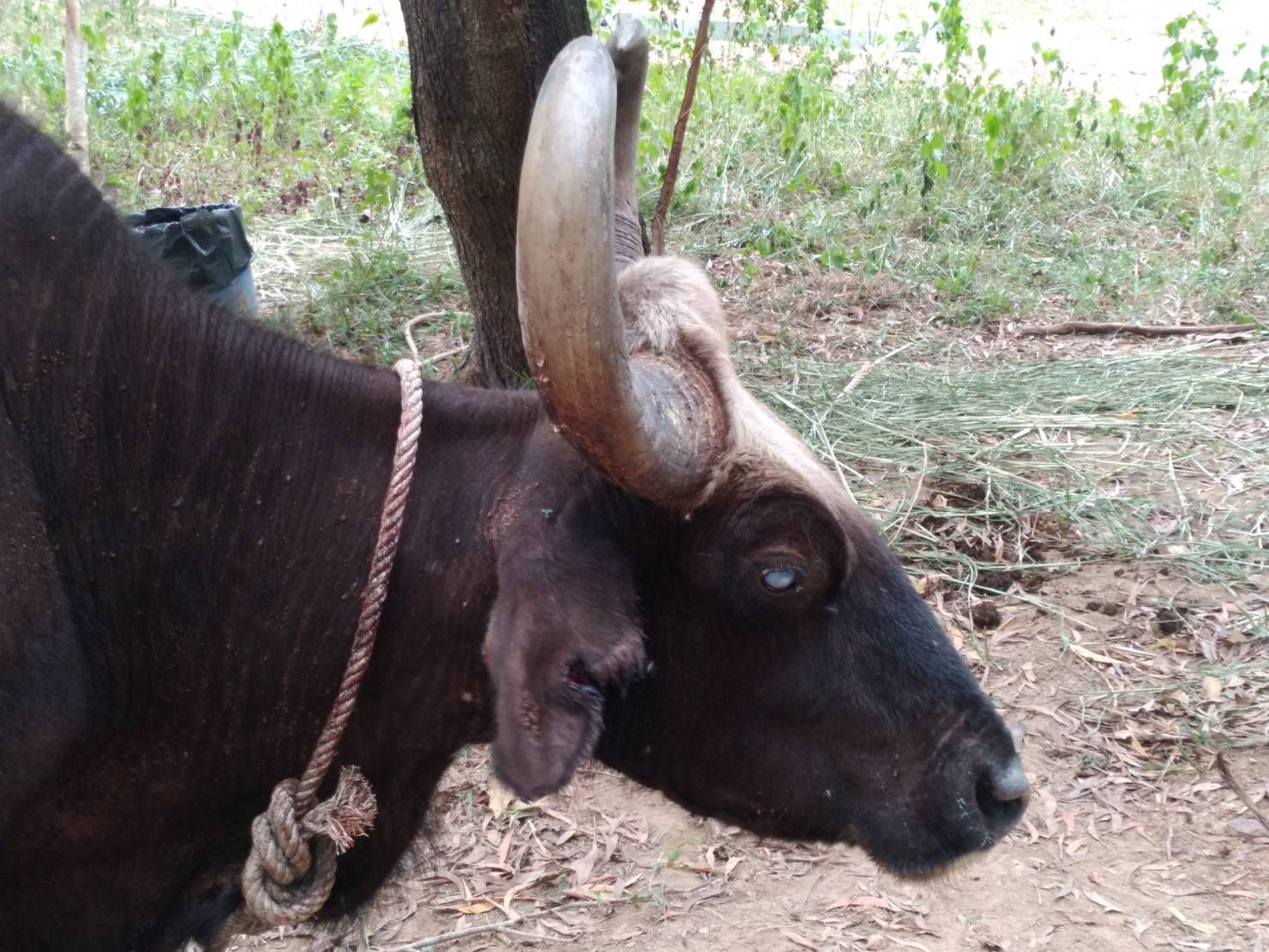
Officers from the Khao Yai Patrolling Unit, Pha Kradat, Moo See, Pak Chong District, Nakhon Ratchasima Province, rescued a female gaur stuck in the mud of the water hole in Khao Yai National Park near Toscana Resort Khao Yai.
It was believed that the gaur was there because she is blind in both eyes.
Officials requested a crane from the hotel to lift the gaur out of the mud. After spending more than 4-5 hours doing so, they managed to lift the gaur late on July 16 and subsequently took care of it at the Pha Kradat.
They have named her “Chaba Kaew” and it is currently in the care of Chananya Kanchanasaka, a veterinarian who stated Chaba Kaew was still showing signs of weakness due to her advanced age, which is estimated to be at least 30 years, judging by the curvature of her horn that is almost touching at the tips.
However, on July 19, Khammuan Thongtam, head of the Pha Kradat unit, said that Chaba Kaeo was in much better shape. She can generally eat and drink water.

During this time, residents and officials in Khao Yai have encountered several blind gaurs. Many people believe that this could be due to the piss of the hyena. However, experts explain that this is not the case. Instead, the blindness is caused by a disease transmitted by a certain type of insect that is particularly prolific during the rainy season.
Attapol Charoenchansa, acting director general of the Department of National Parks, Wildlife, and Plant Conservation, explained that these insects are called eye flies. They are widely distributed in certain areas of Thailand, especially the species “siphunculina funicola”.

These insects infest and feed on the eye secretions of gaur calves and cause symptoms such as red eyes, eye irritation, excessive tearing, and a large amount of eye discharge. It can lead to eye infections that spread to the lacrimal glands behind the ears, causing pain and swelling. Usually, the infestation starts in one eye and then spreads to the other, eventually leading to permanent blindness of both eyes.
The infection transmitted by these eye flies can occur in gangsters of all sexes and ages. Factors such as general health and genetics may play an additional role in susceptibility to the infection.

When flies feed on blood and eye secretions from wounds, the healing process is delayed, making the wounds difficult to treat and resulting in chronic wounds. These chronic wounds can serve as entry points for various diseases, leading to infections of the bloodstream and, in some cases, death.
Numbers of this insect species can increase rapidly during the dry and wet seasons, and climate change may play a role in these fluctuations. Currently, there are no clear data on whether there is an increase in bacterial infections or the emergence of new viruses associated with these eye flies.
Researchers are still studying the situation and gathering information to better understand it. Dealing with the problem of these insects is a challenge. Of course, they rely on birds that feed on insects to control their population.















































